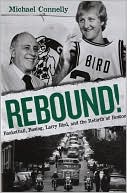Category Books
- Fiction Books & Literature
- Graphic Novels
- Horror
- Mystery & Crime
- Poetry
- Romance Books
- Science Fiction & Fantasy
- Thrillers
- Westerns
- Ages 0-2
- Ages 3-5
- Ages 6-8
- Ages 9-12
- Teens
- Children's Books
- African Americans
- Antiques & Collectibles
- Art, Architecture & Photography
- Bibles & Bible Studies
- Biography
- Business Books
- Christianity
- Computer Books & Technology Books
- Cookbooks, Food & Wine
- Crafts & Hobbies Books
- Education & Teaching
- Engineering
- Entertainment
- Foreign Languages
- Game Books
- Gay & Lesbian
- Health Books, Diet & Fitness Books
- History
- Home & Garden
- Humor Books
- Judaism & Judaica
- Law
- Medical Books
- New Age & Spirituality
- Nonfiction
- Parenting & Family
- Pets
- Philosophy
- Political Books & Current Events Books
- Psychology & Psychotherapy
- Reference
- Religion Books
- Science & Nature
- Self Improvement
- Sex & Relationships
- Social Sciences
- Sports & Adventure
- Study Guides & Test Prep
- Travel
- True Crime
- Weddings
- Women's Studies
Rebound!: Basketball, Busing, Larry Bird, and the Rebirth of Boston »

Authors: Michael P. Connelly
ISBN-13: 9780760335017, ISBN-10: 076033501X
Format: Hardcover
Publisher: MBI Publishing Company
Date Published: December 2008
Edition: (Non-applicable)
Author Biography: Michael P. Connelly
Michael Connelly is a lifelong Boston resident and Celtic fan who attended high school in the city during the turbulent decade of the 1970s. As a writer for the Boston Herald and author of 26 Miles to Boston (a personal narrative of running the Boston Marathon), he has long chronicled the sports that envelop the city and its people. He lives in West Roxbury, Massachusetts.
Book Synopsis
The city of Boston was founded in 1630 on the principles of freedom and liberty, and over the next three centuries, the “city on a hill” was a leading force in the struggle to preserve those freedoms.
The Boston Celtics basketball franchise was founded in 1946 as a charter member of the National Basketball Association, and over the next thirty years, the team won a record thirteen NBA championships.
During the decade of the 1970s, these two storied legacies—liberty and basketball—began to crumble in the streets of Boston and on the parquet floor of the Boston Garden.
The 1974 decision ordering the forced busing of students to desegregate the Boston schools sparked a firestorm that had been building for decades. The Boston School Committee had perpetuated an imbalanced and failing educational system that existed in opposition to the principles of the Constitution and the Supreme Court, and the courts intended to rectify that in the course of just a few months’ time. This perceived affront to a community’s right of self-determination led to bitter opposition in many neighborhoods. Protests and boycotts went unheeded, and a virtual police state was instituted on the streets and in the schools. The city was polarized. In April 1976, the brutal attack on an African-American attorney by white students—using as a weapon a flagpole bearing the American flag—was the symbolic culmination of the turmoil that was engulfing the city.
When Bill Russell retired from basketball in 1969, it represented a changing of the guard in the Celtic family. The Hall of Fame center (and coach since 1966) had formed the cornerstone of eleven championshipteams, and with his departure a piece of the Celtic mystique went with him. In 1970, Boston had its first losing record since before Red Auerbach arrived as coach in 1950. Although the Russell-less franchise managed to secure two more titles in the decade, Celtic Pride took a major hit with dreadful finishes in 1978 and 1979. The acquisition of unmotivated, me-first players undermined the team concept that had defined Celtic greatness for years.
Then, in June 1979, the Boston Celtics signed forward Larry Bird from Indiana State University. Joining a team that had finished 25 games out of first place the year before, Bird helped carry the Celtics back to the top of the standings. In his second season—with the addition of Kevin McHale and Robert Parish—the Boston Celtics succeeded in hanging another championship banner from the Garden rafters. The citizens of Boston came together to join their team in celebration of victory and a renewed commitment to teamwork—on the basketball court and in city’s neighborhoods.
Author Michael Connelly chronicles these two distinct but all-encompassing worlds that helped define the city of Boston. The history of basketball’s greatest franchise is intertwined with the tale of a city’s struggle to reconcile its longstanding tradition as a bastion of liberty with the increasing presence of division and violence.
The Bulletin
At its heart, Connelly's book is often a love letter to the city and praise for how it - like the Celtics team it loves - has proved resilient over the years.
Table of Contents
Subjects
 American History
American History  United States History - Northeastern & Middle Atlantic Region
United States History - Northeastern & Middle Atlantic RegionNonfiction
 Social Sciences
Social Sciences  General & Miscellaneous
General & MiscellaneousScience & Nature
 Social Sciences
Social Sciences  General & Miscellaneous
General & MiscellaneousSocial Sciences
 General & Miscellaneous
General & Miscellaneous  Ethnic & Race Relations
Ethnic & Race RelationsSports & Adventure
 Basketball
Basketball  Professional Basketball
Professional BasketballNonfiction
 History
History  American History
American History
